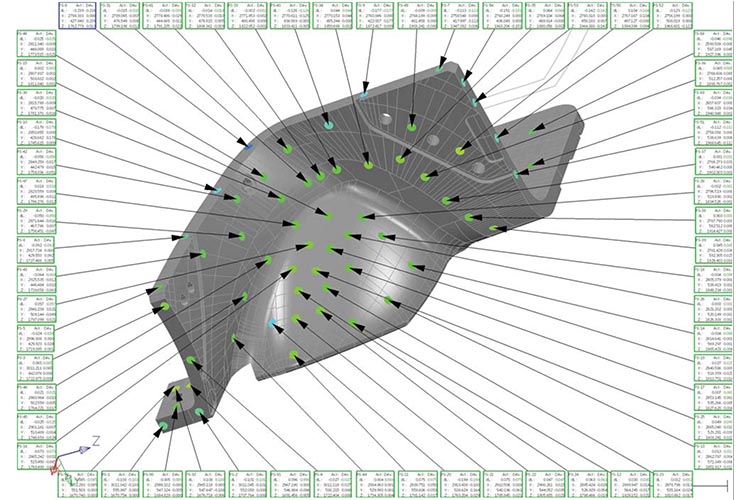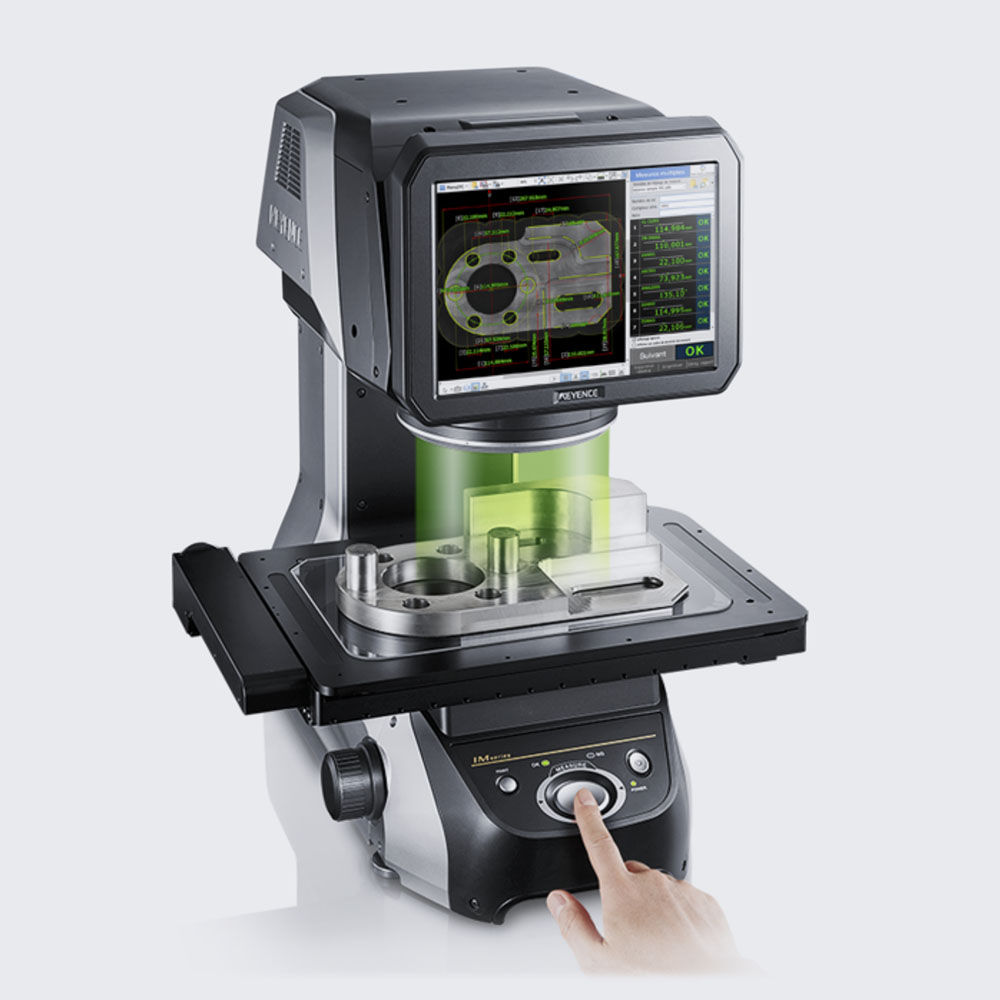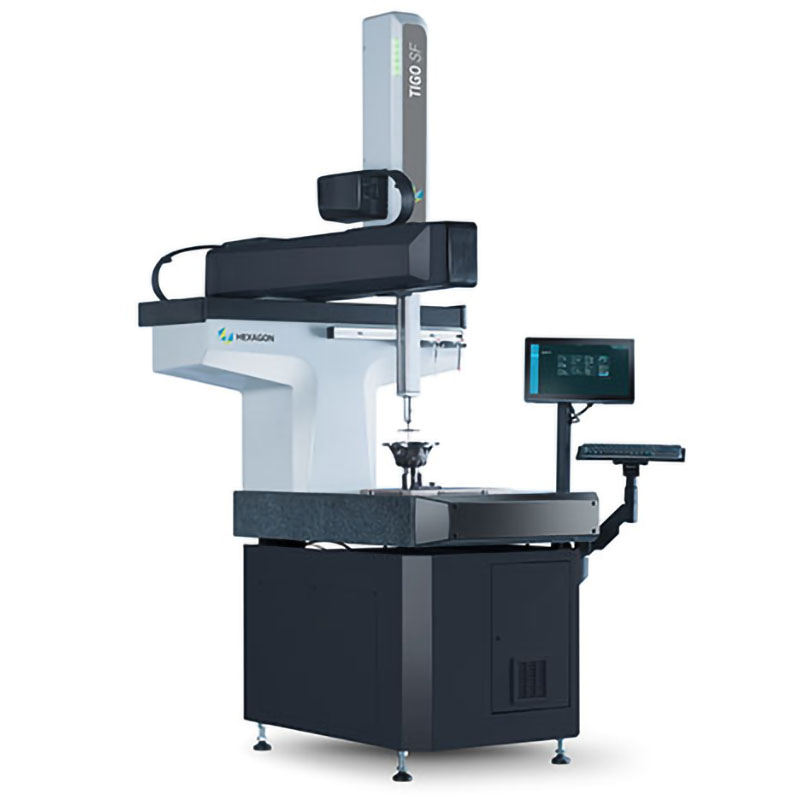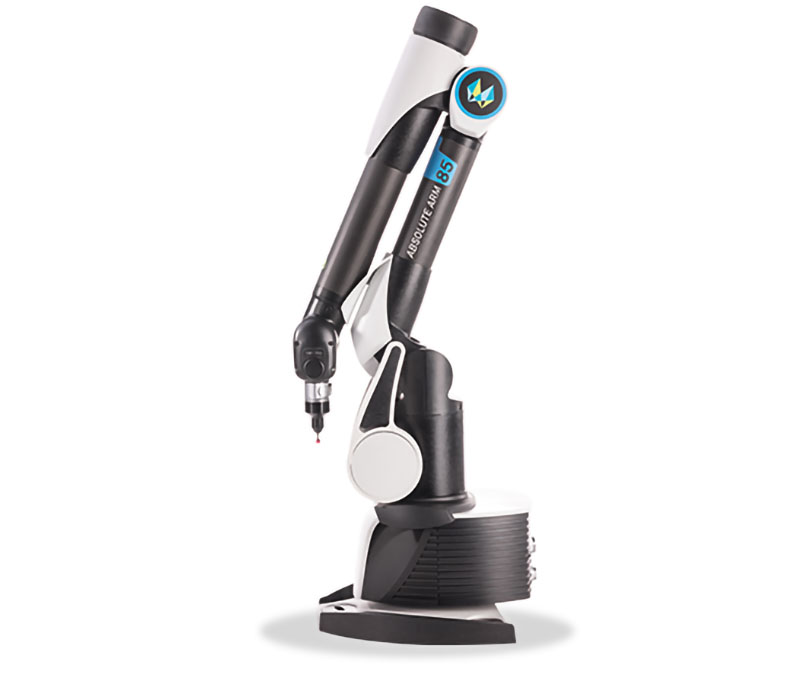Equipped with the latest innovations in three-dimensional metrology, 3D scanner or measuring arm, we are able to control characteristics and behavior of a part (geometry, dimensions, density, resistance, surface quality, etc.) and to correct them if necessary or to review the manufacturing process.
Having ultra-precise measurement tools also makes it possible to carry out reverse engineering: modeling a part from a existing specimen.
Metrology

We have different levels of control. Each has its specificities, its levels of precision and also its financial and temporal impact. In all cases, the control can be visual or dimensional. We systematically check through the 2D plan.
We can also carry out more extensive metrological control. The quantity of part to be checked and the number of dimensions to be measured must then be specified at the costing request.
These are the tools we use to perform these checks:
Our optical measurement tools
Image Dimension Measurement System KEYENCE IM-7500
This system is a non-contact (optical) measuring device.
- The part to be measured is illuminated by a set of adjustable lamps according to its shape or its material.
- The main measuring lens is coupled with a probe system: It can measure dimensions on X / Y thanks to a first probe, but also measure the height between two planes thanks to a second Z gauge probe.
- The precision of the machine is over 0.001mm
- The Keyence IM 7500 projector simultaneously measures up to 99 dimensions in secondes.
- It offers the possibility of creating control ranges to increase speed
- It can be used to control all types of parts

Our three-dimensional measurement tools
MMT
MMT machine gives ultra-precise dimensional and geometric measurements.
- It is made up of several parts:
- A support table (Marble)
- 3 axes (X, Y and Z)
- A numerical pad to control machine movements
- A probing system - The M.M.T is connected to a computer with a coordinate interpretation software.
- This software calculates the deviations of the geometric shapes felt on the part compared to the 3D file.
- The force applied during probing is calibrated so as to obtain very high precision measurements down to a few microns.


Absolute Arm
- The light and mobile arm is composed of 6 or 7 axes depending on the model : the operator is to move and reach places that are very difficult to access.
- It is fixed and connected to a computer. The probing is done manually but the measurement accuracy remains very high.
- In addition to the inspection and control of parts, the measuring arm is a widely used tool for digitizing existing parts to create a CAD (Reverse engineering) model.
Chemical, radio & microstructural analysis
Chemical composition analysis
Chemical analysis makes it possible to control the quality of the material. It is often used for pressure casting projects. We work with partners who are specialists in this field. Thanks to their analyses, it is possible to:
- Determine the chemical composition
- Check the quality and composition of the surface layers
- Identify exogenous pollution (corrosion, appearance defect)
- Check the chemical impact of a process: welding, brazing, heat treatment
- Map the chemical elements distribution at the microscopic level
Stainless steels, low or unalloyed, alloys of nickel, titanium, aluminum, copper, zinc, cobalt and cast iron can be analysed.
Radio analyses: X-ray tomography
Tomography helps to analyse the health of matter. It is based on the in X-ray absorption by the matter according to its density. It consists in the search for defects, sinkings, porosities, cracks or other anomalies that may be present in the manufactured parts. It is also a way to check the manufacturing process, highlighting core offsets, too thin walls or other assembly anomalies. We often use it for pressure casting projects to check for proper porosities filling and extent.
For this type of analysis, we work with partners specializing in radio analyses.
Micrographic analysis
Used to investigate the structure, phase and crystal orientation of crystalline materials, and therefore an extremely valuable tool in the field of additive manufacturing. It can reveal texture, grain size and morphology, defects and deformation. Very useful for detection and evaluation an Alpha case in titanium parts produced by AM.
